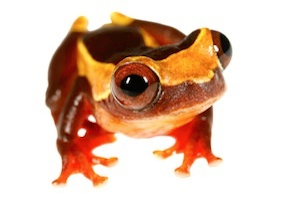Discover Unmatched Charm: Rain Frog for Sale Awaits to Improve Your Life!
Discover Unmatched Charm: Rain Frog for Sale Awaits to Improve Your Life!
Blog Article
The Best Reptile Enclosures: Exactly How to Develop the Ideal Habitat
Developing the ideal environment for reptiles is not almost putting them in a tank or room; it entails a thoughtful consideration of different aspects that add to their overall wellness. From the dimension of the unit to the kind of substratum used, every aspect plays an essential function in giving an environment where your reptile can flourish. By comprehending the details needs of your reptile species and carrying out the ideal environment setup, you can ensure their health and wellness and joy in bondage.
Picking the Right Unit Dimension
When choosing a room size for reptiles, it is important to consider their natural actions and room demands to ensure their well-being and health. Various reptile varieties have varying needs when it comes to habitat room.
A basic policy of thumb is to provide adequate room for the reptile to display all-natural behaviors, such as basking, concealing, climbing up, and foraging. By thoroughly taking into consideration the particular requirements of the reptile varieties in concern, proprietors can develop a suitable and enhancing environment that promotes general health and encourages natural actions.
Establishing Up Proper Heating Aspects
To make certain the well-being and health and wellness of reptiles in their units, it is important to very carefully establish proper burner. Reptiles are ectothermic animals, meaning they count on outside warm resources to manage their body temperature. When establishing heating aspects in a reptile room, it is critical to consider the specific temperature requirements of the types you are taking care of. Various reptiles have differing temperature level requires based upon their all-natural habitat, so it is essential to study and comprehend these needs.
One common and effective home heating aspect for reptile enclosures is a heat light or ceramic warmth emitter. These warm sources can be used to develop a temperature level gradient within the enclosure, permitting reptiles to relocate between warmer and cooler areas as required. Furthermore, under-tank heating pads or warmth floor coverings can be utilized to supply tummy heat, which is specifically helpful for reptiles that need extra heat to help in digestion.
Checking the temperature within the unit utilizing a thermostat is important to ensure that the home heating components are preserving the ideal temperature array for your reptile. On a regular basis check and change the burner as required to create a healthy and comfy setting for your scaly good friend.
Selecting Appropriate Illumination Components

Supplying the Ideal Substratum
Selecting the proper substratum is essential for producing a comfortable and suitable setting for reptiles in their enclosures. Some reptiles, such as desert-dwelling species like bearded dragons, flourish on substratums like calcium sand or reptile rug, while others, like round pythons, favor coconut husk or go now aspen bedding to maintain humidity levels.
Stay clear of substratums that can trigger impaction, such as loose substratums like sand or crushed rock, particularly for reptiles understood to ingest their bedding. Regularly cleansing and changing the substrate is vital to make certain a tidy and sanitary setting for your reptile.
Decorating for Enrichment and Comfort
Thinking about the substratum's duty in providing this post a foundation for natural habits and keeping a suitable environment, enhancing the reptile room with appropriate designs is critical for both enrichment and comfort. When decorating the enclosure, it is vital to think about the reptile's species-specific demands and actions to develop an area that promotes psychological and physical well-being. By integrating a range of designs that simulate the reptile's all-natural environment, proprietors can ensure their family pet's comfort and promote their natural instincts, ultimately leading to a happier and healthier reptile.
Verdict

Developing the ideal habitat for reptiles is not simply about putting them in a tank or unit; it includes a thoughtful factor to consider of different factors that contribute to their total wellness.Picking the proper substratum is vital for creating a comfy and ideal setting for reptiles in their rooms. Some reptiles, such as desert-dwelling varieties like bearded dragons, flourish on substratums like calcium sand or reptile carpet, while others, like sphere pythons, prefer coconut husk or aspen bed linen to keep humidity levels.
By including a variety of designs that resemble the reptile's natural habitat, proprietors can ensure their animal's convenience and stimulate their natural impulses, inevitably leading to a happier and healthier reptile.
In verdict, developing the optimal environment for reptiles entails selecting the suitable room size, heating aspects, lighting components, substratum, and decorations.
Report this page